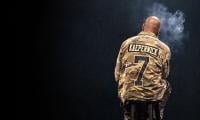KARACHI: The Sindh High Court on Thursday set aside the death sentence of British nationality holder Ahmed Omer Sheikh and life imprisonment sentences of three Pakistanis in the US journalist Daniel Pearl kidnapping for ransom and murder case under anti-terrorism charges after 18 years of hearing of appeals, observing “kidnapping for ransom and murder charges could not be established against them.”
The court, however, convicted Sheikh Omer having found him guilty of abducting Daniel Pearl “by deceitful means”, inducing him to go with him on the basis of last scene evidence as “Pearl was never seen alive again” and sentenced him to 7 years in prison with fine of Rs.2 million and he had already undergone the sentence. The court observed that the abduction of US journalist would not fall within the purview of Anti-Terrorism Act as there was no design, object or purpose to cause terrorism by such act and provisions of the ATA will not apply and as such the appellant Omer Ahmed Sheikh will be entitled to remission in accordance with the law.
British nationality holder Ahmed Omer Sheikh was sentenced to death for kidnapping and killing the journalist, and his three accomplices – Fahad Naseem, Syed Salman Saqib and Sheikh Mohammad Adil – were sentenced to life imprisonment with a fine of Rs500,000 each by a Hyderabad anti-terrorism court on July 15, 2002.
Pearl, a US national and the South Asian region bureau chief of the Wall Street Journal, was kidnapped on January 23, 2002, in Karachi and later shown beheaded by his captors in a video tape when their demands were not met. The US journalist came to Pakistan to make contact with Pir Mubarak Shah Geelani in order to seek information in connection with an incident whereby a person, known as Richard Reed, later dubbed as the shoe bomber, a follower of Geelani, had tried to blow up a commercial flight abroad after the 9/11 incident in 2001.
According to the prosecution, the appellants hatched a conspiracy to abduct Daniel Pearl and later demanded the wife of abducted journalist to convey to the US government their demands for providing lawyers access to Pakistanis detained by the US after the US invasion of Afghanistan, repatriation of Pakistani detainees from Cuba, return of former Taliban Ambassador Mulla Mohammad Zaeef to Pakistan and delivery of F-16 jets to Pakistan or repayment of money given to the US authorities.
The SHC’s division bench, headed by Justice Mohammad Karim Khan Agha, observed in its judgment that the court had not found any evidence to prove that either the appellant or any other appellants hatched the conspiracy to kidnap Pearl for ransom but proved that appellant Omer Sheikh committed the offence of US journalist's abduction by deceitful means, inducing him to go with him on the basis of last scene evidence as Pearl was never seen live again.
The court observed that it was unknown where and when Pearl was murdered and it would not be safe to convict Omer Sheikh for kidnapping for ransom or murder on the basis of last seen or last seen together evidence without strong unimpeachable corroborative evidence, which was lacking in the case. The court observed that the prosecution produced a video, which FBI agent John Mulligan had acquired from a source on February 21, 2002 which showed Pearl being executed by having his head cut off by a knife but no one else was shown in the video and no murder weapon was found.
The court observed that judicial confessions of the co-appellants Salman Saqib and Fahad Naseem have not been made voluntarily and the same could not be relied upon observing that there was no doubt that taking the case as a high profile case, the Pakistani police were under huge pressure to get results quickly either in terms of the safe return of Pearl or the arrest of those responsible for his disappearance. The court observed that under these circumstances, it would not be completely surprising if the police resorted to rough tactics in order to extract confessions giving example of the UK in the 1970s trials of terrorism and murder of the so-called “Guildford Four” and “Birmingham Six” as there was a strong public perception that police most likely obtained confessions through coercion and strong arm tactics.
The court also questioned the claim of Karachi Police about the arrest of Ahmed Omer Sheikh and observed that appellant Omer Sheikh was arrested in Lahore on February 6, 2002 where he surrendered to the police and was not arrested in Karachi on February 13 as alleged by the prosecution.
The court discarded the evidence of Federal Bureau of Investigation’s computer expert Ronald Joseph with regard to sending of emails to Pearl's wife by the co-appellant Fahad Naseem and recovery of laptop observing that there was major and material contradiction in the prosecution evidence concerning when the laptop was recovered and when it was examined by the FBI forensic expert. The court observed that if the prosecution's version regarding the recovery of the laptop on the night of February 10/11 is to be believed, then it would not have been possible for the same laptop to have been examined by the FBI expert on February 4.
The court observed that the possibility could not be ruled out that the FBI was given a doctored laptop by the Pakistani police who then conveniently recovered it from where Fahad Naseem was residing once it was returned by the FBI. The court observed that the court had grave doubts about the recovery of the laptop and as such do not place any reliance on the expert report generated from it. The court also discarded the handwriting expert's report against the appellants.
The court discarded the judicial confessions of co-appellants Salman Saqib and Fahad Naseem, recoveries from Ahmed Omer Sheikh with regard to the copy of email, laptop recovery, FBI computer expert report and observed that there was no direct evidence that any of the appellants sent the e-mails in respect of kidnapping for ransom and the laptop from which it was allegedly sent is also in doubt. The court observed that the prosecution has not been able to make a case under kidnapping for ransom against any appellant on the basis of circumstantial evidence as there were many missing links in the chain of the evidence from the abduction of Pearl to his ultimate murder.
The court, after perusal of the evidence of the case, acquitted all the appellants of kidnapping for ransom and murder charges. The court observed that the video of Pearl execution was given by a source to FBI agent John Mulligan on February 21, 2002, who deposed that there was no date shown when the video of execution was made.
The court observed it was unknown where and when Pearl was murdered and it would not be safe to convict him for kidnapping for ransom or murder on the basis of last seen or last seen together evidence without strong unimpeachable corroborative evidence, which was lacking in the case. The court observed that the prosecution produced a video which FBI agent John Mulligan had acquired from a source on February 21, 2002 which showed Pearl being executed by having his head cut off by a knife but no one else was shown in the video and no murder weapon was found.
The court observed that even if the video was authentic, at best it only proves that Pearl was murdered and the manner of his murder. The court observed that no evidence had been brought on record by the prosecution to link any of the appellants to the murder of Pearl and kidnapping for ransom charges and, as such, all the appellants are acquitted from the charges. The court observed that it is the golden principle of criminal jurisprudence that the prosecution must prove its case against the accused beyond a reasonable doubt and that the benefit of doubt must go to the accused by the way of right as opposed to concession.
The court set side the death sentence and life imprisonment sentence of Ahmed Omer Sheikh and other co-appellants under kidnapping for ransom and murder charges of US journalist under the anti-terrorism law. The court, however, convicted Sheikh Omer having found him guilty of abducting Daniel Pearl “by deceitful means” inducing him to go with him on the basis of last scene evidence as “Pearl was never seen live again” and sentenced him to seven years in prison with fine of Rs.2 million and he had already undergone the sentence.
Regarding the 18-year prolonged delay of appeals of the appellants, the court observed that they were pained to have noticed with concern that these appeals had been pending for the last 18 years during which time the appellants have been in jail.
The court observed that to keep an appeal pending for years on end regardless of who is at fault is tantamount to violating the Article 10 (A) of the Constitution and ultimately it is for the judges before whom such cases are fixed to use their judicial authority to ensure that such appeals are decided expeditiously. The court suggested that high courts need to put in place a system for expediting the hearing and deciding old appeals to ensure that Article 10 (A) of the Constitution is complied with and an appeal was a meaningful right.
The court observed that if a person was released after serving out his sentence and his appeal still remains pending, then an appeal can only be regarded as a right on paper which was completely “illusionary and would amount to fraud on both the appellant and the criminal justice system.”
Appellants' counsel Mahmood A Khan, Rai Bashir and Khawaja Naveed Ahmed had submitted in their arguments that the prosecution had miserably failed to prove its case beyond any reasonable doubt against accused Ahmed Omer Saeed Sheikh and co-appellants as Sheikh had neither aided, abetted, participated in the alleged crime and he had never made any conspiracy for kidnapping for ransom, raising demands of ransom and causing the murder of Daniel Pearl. They submitted that the prosecution witnesses in the case against the accused persons are mostly policemen and their testimonies cannot be relied upon. They submitted that recoveries of the laptop computer and e-mail writings and the messages foisted on the appellants, Fahad Naseem and Adil Sheikh, and their confessions before the judicial magistrate were very much defective and not voluntary. They submitted that admittedly there was no eyewitness of the case and the prosecution relied upon very weak circumstantial evidence, which was created upon by the prosecution. They said that the recovery of the laptop computer was shown from the appellant Fahad on February 11, 2002 while the computer expert Ronald Joseph had deposed that he was given the computer for verification on February 4 and he examined the laptop for six days and such evidence could not be relied upon and requested the court to set aside the conviction.
Deputy Prosecutor General Saleem Akhtar supported the anti-terrorism court's judgment and submitted that the prosecution proved its case against the appellants beyond any shadow of doubt and requested the court to dismiss the appeals and enhance the life imprisonment of the three co-accused to death penalty. Hashim and other co-accused – Asim alias Qasim, Hassan, Ahmed Bhai, Imtiaz Siddiqui and Amjad Farooqui – were declared proclaimed offenders by the court. The appeals of the convicts have been pending at the SHC since 2002.
The brothers of Fahad Naseem and Sheikh Mohammad Adil expressed satisfaction over the SHC ruling and said that despite 18 painful years, at last justice was done. They said that their brothers were incarcerated in the false case for 18 years and at last the truth had prevailed. The deputy prosecutor general said that the Sindh government will file an appeal before the Supreme Court after examining the SHC judgment as to whether the case of appeal is made out or not.















